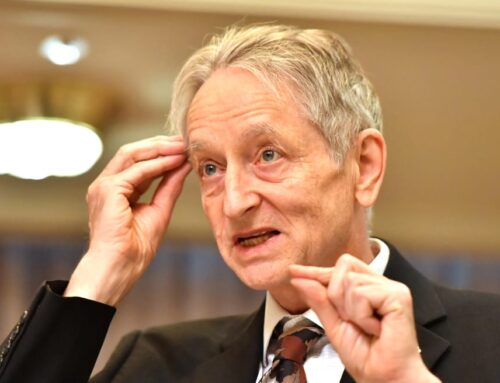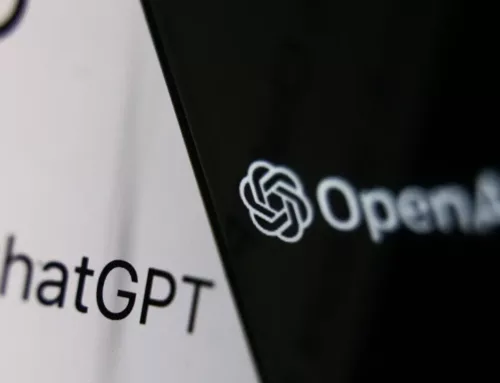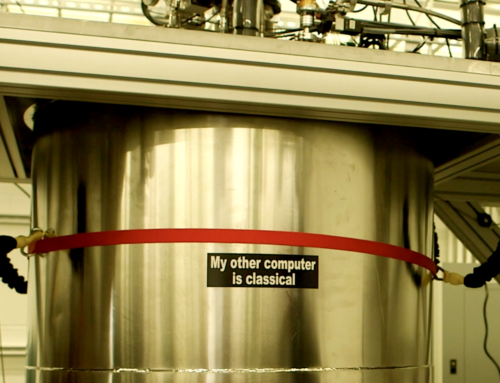Feature image via Planar Photonics
From the world of the extremely small comes one extremely big number: China claims its new, purpose-built quantum computer performed a calculation in 200 seconds that would take a supercomputer 2.5 billion years to complete. In other words, as an article from Nature explains, “The team achieved within a few minutes what would take half the age of Earth on the best existing supercomputers.”
The report, published last week in Science, outlines how a Hefei team, led by quantum veterans Jian-Wei Pan and Chao-Yang Lu at the University of Science and Technology of China, achieved the feat using quantum photonics – a world first. The team employed photonics, a technique that uses light particles, to perform a very specific task, called a boson-sampling problem. The machine used is not a programmable device that can be used for other tasks but was built for the sole purpose of demonstrating and measuring its efficacy and speed at solving the problem, compared to classical computing power.
While China is well respected as a global leader in quantum communications, news of the republic’s quantum computing industry has so far received a far more meagre share of the headlines than US quantum computing counterparts. However, with billions of dollars purportedly pumped into the sector promising “significant breakthroughs by 2030”, perhaps the news should not come as such a shock.
The authors of the paper noted that the boson-sampling approach presents not just a convenient vehicle for demonstrating quantum advantage, but also has the potential to be used for practical applications across quantum chemistry, graph theory, and machine learning. As such, the demonstration of its successful application using a quantum photonics device should prove a useful case study for diverse ends.
The news comes about a year after Google claimed to have achieved quantum supremacy, a term that was quickly replaced by ‘quantum advantage’ when IBM and other quantum researchers stirred up a controversy over the usefulness of such a claim. The benchmark for demonstrating quantum advantage dictates that it should be unlikely that a classical method could ever produce results quicker for a given task than the quantum computational method. Even with this definition, the challenge of practical applicability persists.
Global researchers, from Christian Weedbrook, chief executive of quantum-computing startup Xanadu in Toronto, to John Martinis, Google’s ex-top quantum scientist (now at the University of NSW-based Silicon Quantum Computing), have responded to the report with cautious scepticism. They argue that the Chinese team’s photonic circuit is not programmable, rendering it useless for solving practical problems and fettering the significance of the results. This presents a major distinction between the Hefei team’s efforts and Google’s own controversial success with their Sycamore processor last year, which used a programmable chip.
The reason for this is that error correction persists as a significant challenge in scaling quantum computers for practical usage. In order to perform error correction, a quantum computer must be programmable. Martinis concluded that, while the results make for a “nice experiment” they do not necessarily signify anything for meaningful scalability. This conclusion highlights the problem with many quantum papers (and with the system of academic scientific discovery, more generally). As Martinis comments, “You need to find out whether the experiment is actually taking you to a long-term success or is it just some nice little science experiment.”
Regardless of criticisms, it is simply impossible to skip over this stage in the development of quantum computing and jump to practical applications. Quantum computers are still in the very early stages of development, where theories are being put to the test and different approaches are being trialled. Realistically, useful applications of quantum computing technologies are still a way off. While it may not pave a clear road to wide-scale quantum useability, the novel research performed by Jian-Wei Pan, Chao-Yang Lu and their team adds an important step in the pathway that will ultimately help lead the industry forward.







[…] have been done in these (fake) photon’s quantum computer’s advantage experiments ( this last-paragraph ) […]